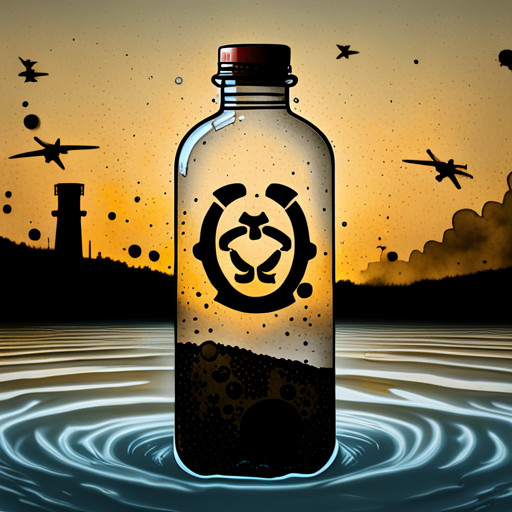Seeking Justice for Camp Lejeune Water Contamination
The catastrophic water contamination at Camp Lejeune from 1953 to 1987 is considered one of the most significant public health disasters in American history.

This article critically analyses the impact of this contamination, the role of toxic chemicals, survivor stories, and the ongoing legal proceedings.
Furthermore, it provides invaluable insight into the filing process for claims and the importance of appropriate legal representation.
The intent is to shed light on the quest for justice in this dire situation.
Key Takeaways
- Filing a Camp Lejeune water lawsuit can result in a significant lump-sum award and compensation for pain and suffering.
- Plaintiffs may receive the present value of a lifetime of monthly income payments.
- Lawsuits provide relief for those previously denied service-related benefits and do not impact the benefits currently being received.
- The drinking water at Camp Lejeune was contaminated with toxic chemicals, including trichloroethylene (TCE) and perchloroethylene (PCE), which may lead to cancer and other health problems.
Understanding the Impact of Camp Lejeune Water Contamination

The impact of water contamination at Camp Lejeune, where all four branches of the military resided or trained from 1953 to 1987, is significant. The drinking water found to contain toxic chemicals such as trichloroethylene (TCE) and perchloroethylene (PCE) at levels exceeding safety standards, potentially leading to health issues including cancer.
This contamination, spanning over three decades, may have exposed up to one million military personnel and their families to these harmful chemicals. The health consequences of water contamination at the camp have been the subject of extensive investigation and research, revealing links to several illnesses such as leukemia, Parkinson's disease, and non-Hodgkin's lymphoma.
The impact of Camp Lejeune water contamination thus resonates beyond the confines of the military base, affecting generations and raising concerns about environmental health standards.
The Role of Toxic Chemicals in Water Contamination at Camp Lejeune

Exposure to toxic chemicals, specifically trichloroethylene (TCE) and perchloroethylene (PCE), in the drinking supply was a significant health crisis for military personnel and their families stationed at this base between 1953 and 1987. In-depth studies indicate these chemicals were linked to a variety of health risks, including cancer and neurological disorders.
Despite awareness of the contamination, government response was reportedly slow, raising questions about accountability. The delayed remediation efforts further exacerbated the health risks for those exposed.
In the aftermath, the government implemented stricter regulations to prevent future occurrences. However, the accountability for the long-term health consequences of the exposed personnel remains a contentious issue.
This incident underscores the imperative need for effective measures to manage toxic exposure in military environments.
Personal Experiences: Stories of Camp Lejeune Survivors

Personal narratives from survivors of the toxic exposure incident provide powerful insights into the extent of the health crisis faced by military personnel and their families. These accounts lay bare the devastating health effects experienced by Camp Lejeune survivors.
| Survivor Narratives | Health Effects |
|---|---|
| One account details severe neurologic disorders | Evidence points to a strong correlation with toxic exposure |
| Another highlights the onset of rare cancers | Research validates the link to chemicals in the water |
| A third narrative reveals reproductive health issues | Studies confirm a relationship with chemical contamination |
| Lastly, a story of generational health problems emerges | Indicating potential transgenerational damage from exposure |
These personal experiences, underpinned by extensive research, underscore the urgency of addressing the lingering effects of the Camp Lejeune incident. The narratives serve as a stark reminder of the human cost of environmental negligence.
Legal Proceedings: Updates on the Camp Lejeune Water Lawsuit

Recent legal proceedings have shed light on the ongoing lawsuit related to water contamination at a well-known military base. The case involves exposure to harmful chemicals at Camp Lejeune between 1953 and 1987.
The updates on lawsuits reveal the complexities of the legal battle, with significant implications for victims seeking compensation.
A critical update pertains to the recognition of additional diseases linked to water contamination, expanding the scope of potential claimants.
Lawsuits continue to reveal the extent of negligence, with evidence pointing to the knowledge of contamination persistence by base officials.
The possibility of compensation for victims remains a contentious issue, with ongoing negotiations to determine the appropriate settlement amounts.
These updates underscore the importance of the lawsuit in seeking justice for the victims of Camp Lejeune water contamination.
The Camp Lejeune Justice Act: How to File a Claim

Understanding the process of filing a claim under the Justice Act is crucial for those affected by the hazardous conditions at the military base in question.
The process of filing a claim under the Camp Lejeune Justice Act involves a detailed comprehension of the requirements and eligibility criteria. It is imperative to demonstrate a direct link between the claimant's condition and their exposure to contaminated water at Camp Lejeune.
Furthermore, the Act stipulates that the affected individual must have resided at the base for a minimum of 30 days between 1957 and 1987. A thorough understanding of these specifications is essential for a successful claim.
Overall, the process requires meticulous documentation, comprehensive medical records, and a cogent demonstration of the causal relationship between exposure and illness.
Selecting the Right Legal Representation for Your Case

The selection of appropriate legal representation is a critical step in navigating the intricate process of filing a lawsuit related to toxic exposures. The attorney's knowledge, experience, and dedication to the case directly influence the outcome, particularly regarding compensation for victims impacted by toxic exposure at Camp Lejeune.
Expertise in environmental and toxic tort law is indispensable when choosing the right attorney as these cases often involve complex scientific and legal issues.
Prior success in toxic exposure cases can indicate an attorney's ability to effectively represent victims.
The attorney should have a clear understanding of the Camp Lejeune Justice Act and the process of filing a claim.
Through careful selection, plaintiffs can ensure their legal representation possesses the requisite skills to achieve a favorable resolution.
Privacy & Legalities: Law Firm's Stand on Camp Lejeune Claims

In association with our partner law firms, Lawsuit Legit is sending them claims related to alleged toxic exposures, with a specific focus on adherence to privacy policies and legal stipulations. The firm has underscored the importance of maintaining client confidentiality and adhering to privacy regulations in handling Camp Lejeune claims.
| Matters | Stance |
| Camp Lejeune claims handling | Strict adherence to privacy laws and ethical standards |
| Information disclosure | Limited to necessary parties |
| Client data protection | High priority |
| Legal stipulations | Strict compliance |
These partner Law Firm's stance on Camp Lejeune claims is centered around a commitment to legal accuracy, client confidentiality, and ethical integrity. Privacy concerns for Camp Lejeune claimants are addressed through stringent data protection measures and strict adherence to legal stipulations, thus ensuring the rights and interests of claimants are upheld.
Frequently Asked Questions
What Were Some of the Initial Symptoms Reported by Those Affected by the Camp Lejeune Water Contamination?
Initial symptoms reported by individuals affected by the Camp Lejeune water contamination included cancers, neurological disorders, and birth defects, traced back to the contamination source. Legal recourse has been pursued for compensation and justice.
How Did the Military Initially Respond to the Water Contamination Issue at Camp Lejeune?
The military initially responded to the water contamination issue at Camp Lejeune with denial and attempted cover up, failing to acknowledge the severity of the situation or the potential health risks posed to residents.
Are There Any Ongoing Medical Studies or Research Projects Related to the Health Impact of the Camp Lejeune Water Contamination?
Ongoing studies continue to investigate the health impacts of Camp Lejeune water contamination. These research projects aim to understand contamination origins and explore potential links to various health conditions, while assessing military accountability in this crisis.
What Is the Current Status of the Camp Lejeune Justice Act and What Does It Mean for Potential Claimants?
The current status of the Camp Lejeune Justice Act sees its implementation underway, providing criteria for claimant eligibility. This legislation presents potential claimants an opportunity to seek compensation for alleged harm due to water contamination.
How Can Current Residents of Camp Lejeune Be Assured That the Water Contamination Issue Has Been Fully Resolved?
Assurance of resolution for Camp Lejeune's water contamination issue can be confirmed through rigorous water testing protocols and comprehensive remediation measures, guaranteeing safe water standards are consistently met and maintained.

This post has been generated by AI and was not reviewed by editors. This is Not legal advice. Please consult with an attorney.




